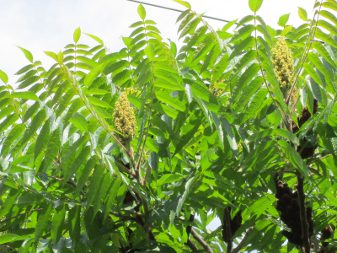
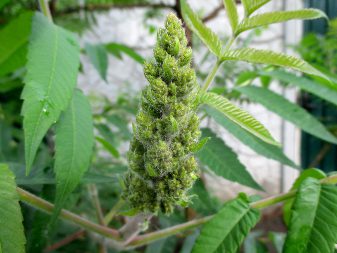
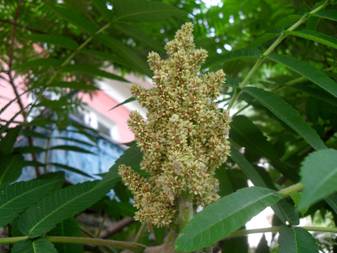
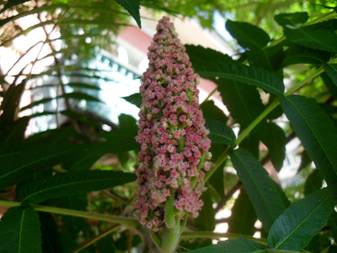
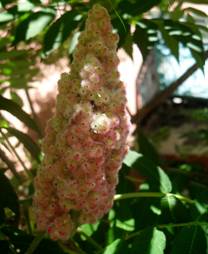
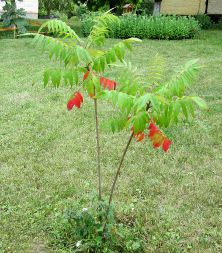




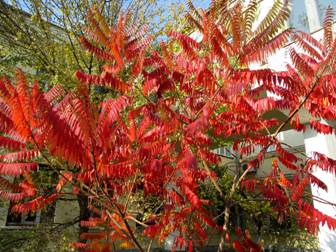
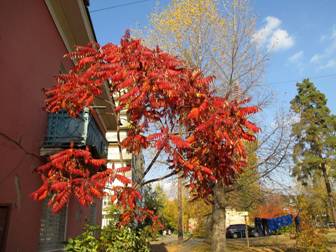
Staghorn Sumac (Rhus typhina), fam. Anacardiaceae.
Last time it becomes very widespread – young saplings appear in many places of DVRZ. Flowers in June with faintly-colored racemes, and all the year round carries maroon composite fruits. It is particularly bright in the middle of autumn, owing to purple-red leaves.
The plant is not picky, prefers sunny locations. The trees grow very fast, but are short-lived. They give plentiful root growth. Severe frosts kill the tops of the shoots, but this may be even beneficial, since the trees become more branchy.
This species does not have a lot of practical use. A sour beverage can be prepared from the fruits, which was popular in the motherland of the plant, within Native American tribes. The spice "sumac", found in the shops of oriental spices, is made from dried and ground fruits of another species – Sicilian or Tanner's Sumac (Rhus coriaria), growing in the mountains of Crimea, the Caucasus, the Mediterranean and Central Asia. It also has sour and astringent taste, rich in antioxidants, has antibacterial and antifungal effect, increase blood coagulation. Besides, there are many toxic members of the Sumac genus, but our staghorn sumac does not depend to that group, fortunately. Only few sensitive people can experience skin irritaion and allergy from contact with sumac juice (sap).